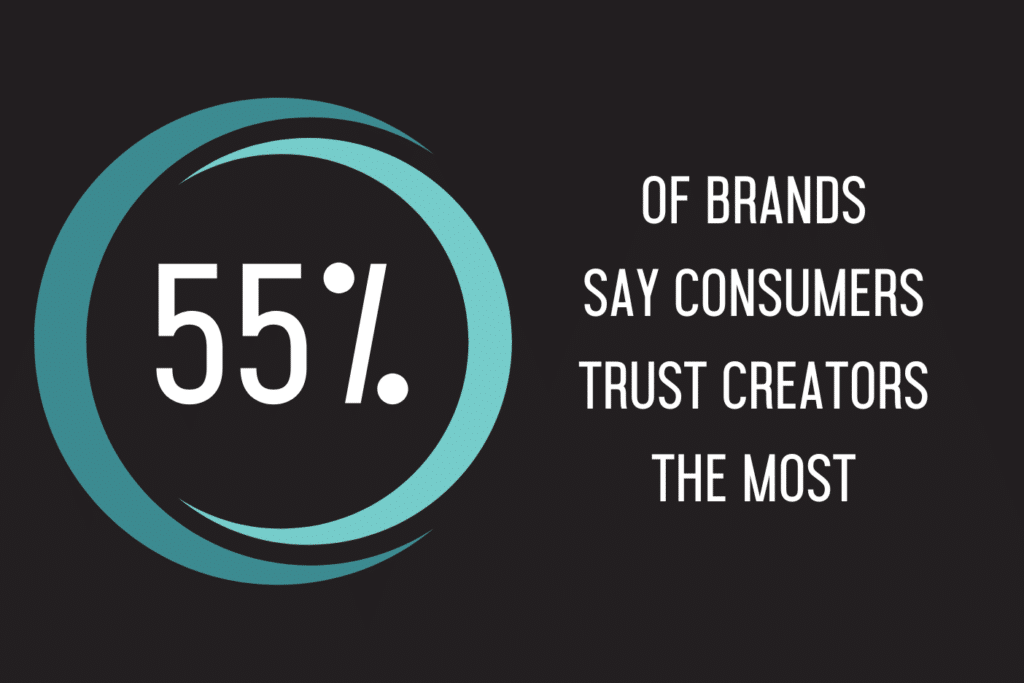Introduction: The Vision for Social Media in 2024
The vision for social media in 2024 is a blend of personalized experiences, immersive content, and interactive user engagement. Influencer marketing, augmented by Artificial Intelligence (AI) and Social Media Algorithms, will play a significant role in shaping user experiences. AI will refine content and ad targeting based on user behavior and preferences, making influencer marketing more effective and personalized. The integration of Augmented Reality (AR) and Virtual Reality (VR) technologies will provide users with immersive and engaging experiences, transforming the way content is consumed and shared on Social Media Platforms. The role of social media in shaping public opinion and societal norms will continue to evolve. Social Media Platforms will be instrumental in combating misinformation and promoting credible content. User-generated content will gain prominence, contributing to the authenticity and diversity of content on social media. Privacy and data security will be paramount, with stringent measures in place to protect user data, thus enhancing user trust and engagement in Social Media Platforms.

Top Predicted Social Media Trends for 2024
Ephemeral content, such as stories and live streams, will continue to dominate the social media scene in 2024. UGC in these formats provides real-time, engaging experiences that resonate with users’ desire for authenticity. This trend aligns with the rise of influencer marketing, where influencers leverage this type of content to engage with their audience, drive engagement, and enhance their brand’s visibility. Social commerce will emerge as a key trend, transforming Social Media Platforms into full-fledged e-commerce platforms. Social Media Advertising will play a crucial role in this transformation, with integrated payment systems and shoppable posts making online shopping more seamless and convenient. Social Media Analytics will be instrumental in understanding user behavior, optimizing ad campaigns, and driving conversions. AI and machine learning will be more prevalent in Social Media Platforms, used for personalized content curation, predictive analytics, and enhanced Social Media Engagement. Video content, powered by AR and VR technologies, will provide immersive and interactive user experiences. Lastly, the focus on privacy and data security will intensify, with robust measures in place to protect user data and ensure privacy.
The Revival of Long-form Content
In 2024, long-form content will see a revival, driven by the need for authoritative and credible content. Influencer marketing and UGC will play a significant role in this trend. Long-form content provides comprehensive coverage of a topic, offering depth and value that short-form content often lacks. This aligns with the increasing demand for authentic, high-quality content on Social Media Platforms.
AI and machine learning technologies will facilitate the curation of personalized long-form content based on user preferences. Social Media Algorithms will optimize the distribution of this content, ensuring it reaches the right audience. Social Media Analytics will provide insights into user engagement with long-form content, helping brands optimize their content strategy.
Long-form content will also play a crucial role in SEO strategies. Detailed articles with rich, relevant content are more likely to rank higher in search engine results, driving organic traffic, and enhancing brand visibility. The rise of voice search and smart speakers will further fuel the demand for long-form content, as these technologies favor detailed content that can answer user queries comprehensively.

Product Placement by Influencers
Influencer Marketing has emerged as a potent force in the digital marketing landscape. Through the strategic product placement by influencers on various social media platforms, businesses have been able to tap into the vast audiences that these influencers command. Influencers, with their authentic and relatable content, provide an organic and non-intrusive method of Social Media Advertising, integrating products seamlessly into their narratives.
The role of influencers extends beyond mere advertising. Their in-depth understanding of their followers’ preferences and behavior offers businesses invaluable Social Media Analytics. These insights can be leveraged to refine product development and marketing strategies, ensuring a higher level of Social Media Engagement. However, it is critical to ensure a symbiotic relationship between the influencers and the brand values to maintain authenticity.
Influencer Marketing is not devoid of challenges. With regulations around influencer marketing becoming increasingly stringent, businesses need to ensure their collaborations are transparent and comply with all legal requirements. Additionally, the choice of influencers must align with the brand’s image to avoid any discord, which can lead to perceived inauthenticity and harm the brand’s reputation.

TikTok’s ‘FaceTime’ Era
TikTok has revolutionized the consumption of Video Content, ushering in the ‘FaceTime’ era. This era is characterized by the creation and consumption of content that is candid, personal, and often filmed in real-time, similar to a FaceTime call. This trend towards authenticity and spontaneity has found favor with users, particularly the younger demographic, enabling them to express themselves freely and connect with like-minded individuals.
The ‘FaceTime’ era has also presented businesses with novel opportunities to enhance their Social Media Engagement. By creating content that aligns with this trend, businesses can improve their visibility on the platform. However, to leverage this trend effectively, businesses must understand the Social Media Algorithms of TikTok. The content must be engaging, relevant, and in sync with the platform’s fast-paced and transient nature.
Despite the opportunities, the ‘FaceTime’ era also poses challenges for businesses. The temporary nature of TikTok’s content necessitates constant content creation to maintain visibility and relevance. Additionally, the trend towards authenticity and spontaneity demands businesses to be more transparent and genuine in their interactions, which may require a shift from traditional marketing strategies.

Increased AI Integrations
The integration of Artificial Intelligence (AI) in social media platforms has been a game-changer. AI technologies, such as machine learning and natural language processing, are being employed to enhance user experiences and deliver personalized content. By analyzing user behavior and preferences, these technologies can curate a tailored content feed, thereby improving user engagement and retention.
AI has revolutionized Social Media Advertising. It enables businesses to accurately target their ads, leading to higher engagement and conversion rates. Additionally, AI can provide deep Social Media Analytics, equipping businesses with the information they need to refine their marketing strategies.
However, the integration of AI also raises pertinent issues around privacy and data security. As users become more aware of their data usage, they demand greater transparency and control. Balancing AI’s benefits with the need to safeguard users’ privacy and data is a challenge that social media platforms must address. Ensuring robust data security measures and being transparent about data usage can help assuage users’ concerns and build trust.
The Rise of Nostalgia Core
The digital marketing landscape has been witnessing a significant shift towards Nostalgia Core, a trend that leverages elements of past eras to engage audiences in a unique and compelling way. This trend is not merely a fleeting fashion, but a powerful marketing strategy that taps into the collective memory of consumers. The key to its success lies in its ability to elicit strong emotional responses from audiences, who find comfort and familiarity in the nostalgic references.
Influencer marketing has been instrumental in the rise of Nostalgia Core, with influencers leveraging the trend to create engaging and relatable content. This, coupled with the use of user-generated content, has allowed brands to tap into the power of nostalgia and create a strong emotional connection with their audience.
The trend is also being amplified by social media advertising, with brands using nostalgic elements in their ads to capture the attention of their audience. Furthermore, the use of video content, augmented reality (AR), and virtual reality (VR) technologies has allowed brands to create immersive and engaging experiences that transport their audience back in time.

Keyword Search & SEO: The New Focus
The importance of Keyword Search and SEO in the digital marketing landscape cannot be overstated. They have become the cornerstone of any successful online marketing strategy, playing a crucial role in driving website traffic, increasing online visibility, and improving overall business performance.
The power of SEO lies in its ability to enhance the visibility of content on search engines. By optimizing content with relevant and high-ranking keywords, businesses can improve their search engine rankings, making their content more accessible to potential customers. This can lead to increased website traffic, higher conversion rates, and ultimately, increased revenue.
However, the successful implementation of SEO and keyword search requires a deep understanding of the target audience and their search habits. This includes understanding the types of keywords they use, the search engines they prefer, and the type of content they are looking for. Therefore, continuous research, testing, and optimization are essential to ensure the effectiveness of these tools.
Platform Selectivity: A Growing Trend
In the ever-evolving landscape of social media, platform selectivity is becoming a growing trend. This strategy involves choosing specific social media platforms to focus on, rather than trying to maintain a presence on all platforms. This approach allows businesses to focus their resources on the platforms that are most relevant to their target audience, leading to more effective and efficient social media strategies.
The benefits of platform selectivity include improved audience engagement, better resource allocation, and increased ROI. By focusing on the platforms where their target audience is most active, businesses can create more targeted and effective content, leading to higher engagement rates and better conversion rates.
However, the successful implementation of platform selectivity requires a deep understanding of the target audience and their platform preferences. This includes understanding which platforms they use most frequently, the types of content they engage with, and the times they are most active. Therefore, careful research, planning, and execution are essential when implementing this strategy.

Non-Linear Storytelling
Non-linear storytelling is a powerful tool in the arsenal of social media advertising. This unique narrative approach, which breaks away from conventional chronological storytelling, is particularly effective on social media platforms. The non-linear format enables user-generated content to flourish, as audiences have the freedom to navigate and interact with the story in a non-sequential manner.
In the context of social media platforms, non-linear storytelling is an effective strategy to enhance social media engagement. The interactive nature of non-linear narratives encourages users to participate and contribute to the storytelling process. This strategy not only boosts user engagement but also fosters a sense of community among the audience.
Non-linear storytelling, combined with social media algorithms, can offer numerous strategic benefits for businesses. Brands can leverage this narrative approach to deliver personalized and immersive content, thereby improving their social media engagement metrics. Furthermore, the use of social media analytics can help brands understand their audience’s interaction with non-linear narratives and optimize their content strategy accordingly.
The Popularity of Gated Content
Gated content is a popular strategy in the realm of social media advertising. This approach involves restricting access to certain content, making it available only to users who provide their contact information or perform specific actions. Gated content is often used in conjunction with social media analytics to generate leads and build a robust customer database.
The effectiveness of gated content in social media advertising can be attributed to its ability to attract highly interested users. By offering valuable content behind a gate, businesses can attract users who are genuinely interested in their products or services. These users, in turn, are more likely to engage with the brand on social media platforms, thereby boosting social media engagement.
However, the success of gated content largely depends on the quality and relevance of the content offered. High-value content such as exclusive video content or in-depth guides can attract more users and generate better leads. Furthermore, the use of social media analytics can help businesses understand their audience’s preferences and optimize their gated content strategy accordingly.
Instagram’s Target: Gen Z
Instagram has successfully targeted Generation Z, leveraging influencer marketing and user-generated content to attract this demographic. With its visually appealing interface and diverse range of features, Instagram has become a popular platform among Gen Z users.
Instagram’s success with Gen Z can be attributed to its focus on video content and influencer marketing. Influencer marketing provides Gen Z users with relatable and authentic content, thereby boosting user engagement.
The use of augmented reality (AR) and virtual reality (VR) has also contributed to Instagram’s popularity among Gen Z. These technologies provide a unique and immersive user experience, further enhancing social media engagement. Moreover, Instagram’s social media algorithms ensure that users see content that aligns with their interests, thereby improving user engagement and retention.
The Growth and Influence of Social Commerce in 2024
In the year 2024, the sphere of social commerce continues to expand, carving a significant niche in the realm of online retail. This amalgamation of social media platforms and e-commerce has given rise to a new business model where consumers can discover, share, and purchase products directly from their social media feeds. This growth trajectory is fueled by several factors, including the escalating use of mobile devices, the rise of influencer marketing, and a growing consumer preference for a seamless and personalized shopping experience.
Technological advancements, particularly in artificial intelligence and machine learning, are playing a pivotal role in propelling social commerce forward. These technologies are enabling businesses to provide personalized product suggestions and streamline the purchasing process on social media platforms. Furthermore, the shift towards mobile shopping is contributing to the growth of social commerce, as consumers increasingly rely on their smartphones for product discovery and purchases.
The influence of social commerce is not confined to retail alone. Businesses across various sectors, including travel, hospitality, entertainment, and media, are leveraging the power of social media advertising and social media analytics to engage with their audience and drive sales. The immediacy of transactions facilitated by social media platforms makes social commerce a potent tool for businesses striving to enhance their online presence and revenue.
Influencers and Honest Selling
In the realm of social commerce, influencer marketing plays an indispensable role in driving sales and shaping consumer perceptions. Individuals with substantial followings on social media platforms have a significant influence on their followers’ purchasing decisions. In 2024, the role of influencers in social commerce is set to become even more prominent, as businesses increasingly incorporate influencer marketing strategies to promote their products and services.
However, with this burgeoning influence comes the responsibility of honest selling. Consumers are becoming more discerning, demanding transparency from the influencers they follow. Consequently, influencers perceived as authentic and honest in their endorsements are likely to have a greater impact on their followers’ purchasing decisions. This shift towards honest selling is altering the dynamics of influencer marketing, with influencers increasingly being held accountable for the products and services they endorse.
Regulations and guidelines are playing a critical role in ensuring honest selling. Social media platforms and regulatory bodies are implementing stricter rules to ensure that influencers disclose their affiliations with the brands they promote clearly. This is fostering a more transparent and accountable influencer marketing landscape, where consumers can make informed decisions based on honest and authentic endorsements.

The Potential of TikTok Shop Fatigue
While social commerce platforms such as TikTok Shop are experiencing exponential growth, the potential for user fatigue is a looming concern. As more businesses leverage these platforms to sell their products, users may become overwhelmed by the sheer volume of product advertisements and promotions. This could lead to a phenomenon known as “shop fatigue”, where users become disengaged and less likely to make purchases.
Addressing the potential of TikTok Shop fatigue will be a key challenge for businesses and the platform itself in 2024. Strategies to mitigate this issue may include better personalization of product recommendations, limiting the frequency of advertisements, and creating more engaging and interactive shopping experiences utilizing video content, augmented reality (AR), and virtual reality (VR).
Despite the potential for shop fatigue, the growth potential of platforms like TikTok Shop remains significant. The integration of short-form video content and e-commerce provides a unique and engaging shopping experience that appeals to younger consumers. As long as businesses and platforms continue to innovate and prioritize social media engagement, the future of social commerce on platforms like TikTok Shop remains promising.
Integration of Retail Media and Creator Economy
The integration of retail media and the creator economy is a significant shift in the digital marketing landscape, particularly in the realm of influencer marketing. Retail media, a strategy that leverages retail platforms for advertising, intersects with the creator economy, characterized by influencers and independent content creators who utilize social media platforms for content distribution and monetization.
This integration is a transformative move in influencer marketing. Brands are not merely advertising on retail platforms but are also collaborating with creators for product development and promotion, effectively altering traditional advertising models. This shift towards a more collaborative and authentic approach has led to an increased use of user-generated content, and a more personalized engagement with audiences on various social media platforms.
Brands that successfully integrate retail media and the creator economy can harness the power of user-generated content, leverage the trust and influence of creators, and reach their audiences in a more engaging way. However, this requires an understanding of social media algorithms, the ability to identify and collaborate with the right creators, and the agility to adapt to the rapidly evolving social media trends.
Significance of Owned Channels and Social Landing Pages
Owned channels and social landing pages are becoming increasingly important in the social media landscape. Owned channels refer to the digital properties that a brand controls, such as its website, blog, and email. These channels provide a platform for brands to control their messaging, engage with their audience, and drive conversions.
Social landing pages, on the other hand, are specific pages on a brand’s website that are designed to receive visitors from social media. These pages are optimized for the social media audience, with content that is relevant, engaging, and designed to encourage specific actions, such as signing up for a newsletter, downloading a resource, or making a purchase.
The significance of owned channels and social landing pages lies in their ability to provide a consistent and controlled brand experience, drive targeted actions, and capture valuable user data. They can also enhance a brand’s SEO efforts, as search engines value content that is relevant, engaging, and linked to from social media.
User-Generated Content: No Longer Overlooked
User-generated content (UGC) is no longer an overlooked aspect of social media strategy. Defined as any form of content, from text and images to videos and reviews, created by users rather than brands, UGC is a powerful tool for building trust, engagement, and community.
UGC offers a wealth of benefits for brands. It provides authentic and relatable content that resonates with audiences, it increases engagement and encourages user participation, and it builds trust as consumers tend to trust user-generated content more than brand-created content.
Moreover, UGC can also boost a brand’s SEO efforts. Search engines value fresh, unique, and user-friendly content, and user-generated content can provide this in abundance. However, leveraging UGC requires careful management, including moderating content for quality and appropriateness, respecting user rights, and acknowledging and rewarding contributors.

The Role of AI in Shaping Social Media Trends
Artificial Intelligence (AI) is a driving force behind the evolution of Social Media Platforms, directly influencing Social Media Advertising and User-generated Content. AI’s predictive capabilities, derived from Social Media Analytics, enable businesses to anticipate user preferences, thereby shaping Social Media Trends. These AI-driven insights help businesses tailor their Influencer Marketing strategies, ensuring they remain relevant and engaging.
AI’s role extends to enhancing the security of Social Media Platforms, detecting fraudulent activities through complex data analysis. Furthermore, AI contributes to the rise of chatbots and virtual assistants on Social Media Platforms, facilitating seamless interactions and enhancing Social Media Engagement. These AI-driven tools learn from interactions, improving their responses and providing 24/7 support.
The emergence of visual search on Social Media Platforms is another AI-driven trend. AI’s ability to analyze and interpret visual content enhances user experience and provides new opportunities for Social Media Advertising. This shift towards visual content underscores the importance of Video Content in Influencer Marketing and User-generated Content.
The Speed of Brand Creative Development through AI
AI is accelerating brand creative development, streamlining processes, and enhancing efficiency for Influencer Marketing. By analyzing vast amounts of Social Media Analytics in real-time, brands can gain deep insights into consumer behavior and trends. These insights enable brands to create personalized Video Content that resonates with their target audience, driving Social Media Engagement and conversions.
AI-powered tools, such as automated design systems and content generation platforms, are enabling brands to produce high-quality creative assets at unprecedented speed. These tools, driven by Social Media Algorithms, generate unique designs and content based on predefined parameters. This reduces the time and effort required in the creative process, allowing for quicker and more effective Social Media Advertising.
AI’s role extends to content optimization. It analyzes the performance of different creative assets, identifying those that resonate most with the audience. This information, derived from Social Media Analytics, can be used to refine future content, ensuring that brands’ creative efforts align with audience preferences.
The Popularity of AI Escapism Among Audiences
AI escapism, a trend growing in popularity on Social Media Platforms, refers to the use of AI technologies to create immersive and engaging experiences. This form of escapism, often delivered through Video Content, provides a unique blend of entertainment and interaction, driving Social Media Engagement.
Virtual influencers, AI-created personalities with significant followings on Social Media Platforms, are a prime example of AI escapism. They provide a new form of entertainment and Influencer Marketing, blurring the lines between reality and virtuality.
Furthermore, AI is driving the popularity of Augmented Reality (AR) and Virtual Reality (VR) experiences on Social Media Platforms. These technologies allow users to immerse themselves in a different world, enhancing Social Media Engagement. Whether it’s trying on clothes virtually or exploring a new city, AR and VR experiences provide unique social experiences.
Lastly, the rise of AI-driven games and interactive content on Social Media Platforms exemplifies AI escapism. These experiences not only entertain users but also engage them in a way that traditional content cannot. As AI continues to evolve, we can expect to see more innovative and immersive forms of escapism on Social Media Platforms.
The Myth of ‘Quick Wins’ with AI
Artificial Intelligence (AI) has become a buzzword in the digital industry, often touted as a quick win solution for various challenges. However, this perception is fundamentally flawed. AI is not a magic bullet that instantly delivers success. Instead, it is a tool that requires strategic planning, careful integration, and continuous refinement to yield significant results. The idea that AI can instantly solve complex problems is a myth that needs debunking.
AI technology is complex and requires a deep understanding of its workings to be effectively implemented. It requires significant investments in time, resources, and manpower. The notion of ‘quick wins’ ignores these realities, leading to unrealistic expectations and disappointment. It’s crucial to understand that AI is not a one-size-fits-all solution but rather a tool to be tailored to specific needs and objectives.
Additionally, AI is not a standalone solution. It needs to be integrated with existing systems and processes for optimal performance. This integration can be a complex task involving various technical and operational challenges. The belief that AI can be quickly and easily plugged into any system is a myth that can lead to costly mistakes and inefficiencies.
Lastly, AI is not a static solution. It requires continuous learning and adaptation to stay effective. The myth of ‘quick wins’ overlooks this dynamic nature of AI, leading to complacency and stagnation. It’s important to remember that AI is a journey, not a destination, and requires ongoing effort and commitment for sustained success.

The Increasing Impact of Creators on Social Media
The rise of social media has given birth to a new breed of influencers: the creators. These individuals are not just passive consumers of content but active creators, shaping the social media landscape with their unique voices and perspectives. The impact of these creators on social media is growing exponentially, reshaping the way we consume and engage with digital content.
Creators are driving trends, influencing opinions, and shaping consumer behavior. They are the new tastemakers, setting the agenda for what’s hot and what’s not in the digital world. Their influence extends beyond their immediate followers, reaching a wider audience through viral content and collaborations. This growing impact of creators is disrupting traditional media and marketing paradigms, forcing brands and businesses to rethink their strategies.
The rise of creators is also democratizing the media landscape. Anyone with a smartphone and an internet connection can become a creator, breaking down barriers to entry and giving a platform to diverse voices. This democratization is fostering creativity and innovation, challenging the status quo, and driving social change.
However, the increasing impact of creators also brings challenges. The line between authentic content and paid promotion is blurring, raising ethical questions. The sheer volume of content is leading to information overload, making it harder for creators to stand out. Despite these challenges, the influence of creators on social media is set to grow, reshaping the digital landscape in profound ways.

The Rise of Creators as Consultants
In the evolving digital landscape, creators are not just content producers but also consultants. They are leveraging their expertise and influence to advise brands and businesses, offering insights into audience behavior, content trends, and digital strategy. This rise of creators as consultants is a testament to their growing clout in the digital world.
Creators have a deep understanding of their audience, knowing what resonates and what falls flat. They are experts in creating engaging content, building communities, and driving conversations. This expertise makes them valuable consultants, helping brands and businesses navigate the complex social media landscape.
Moreover, creators are influencers, with a loyal following that trusts their opinions and recommendations. This influence gives them a unique perspective on consumer behavior, making them valuable partners for brands looking to connect with their target audience. As consultants, creators can provide insights into audience preferences, trends, and sentiments, helping brands craft effective marketing strategies.
However, the rise of creators as consultants also presents challenges. The line between creator and consultant can be blurry, raising questions about objectivity and credibility. There is also the risk of over-commercialization, with creators losing their authenticity in the pursuit of business opportunities. Despite these challenges, the trend of creators as consultants is set to grow, offering new opportunities and challenges in the digital world.

